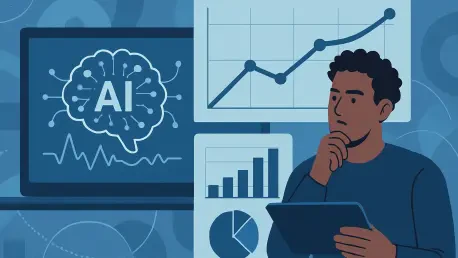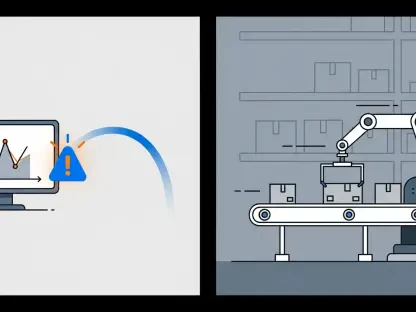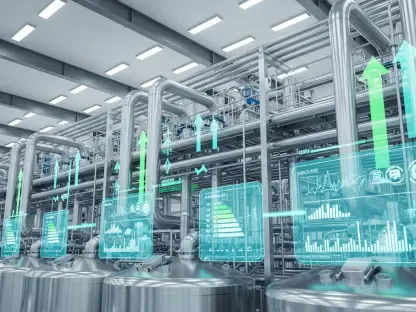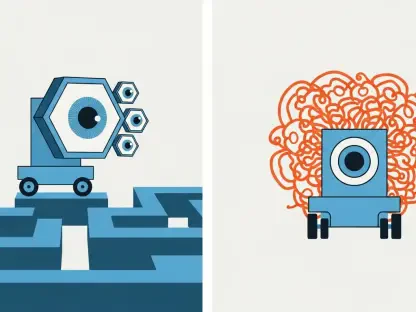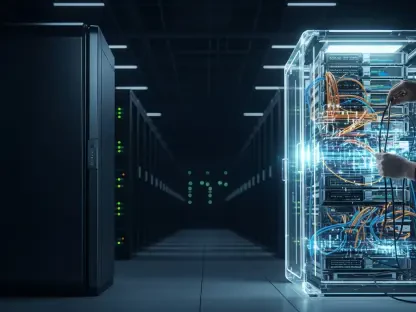In today’s rapidly advancing technological landscape, artificial intelligence (AI) plays an essential role in anticipating future states in dynamic environments. These predictions are no longer the realm of science fiction but practical tools impacting various sectors such as finance, healthcare, and logistics. Language models, underpinned by sophisticated AI algorithms, are central to this transformation. By utilizing advanced mathematical frameworks and innovations in deep learning, these models offer capabilities that were once thought impossible. The contrast between traditional human-centric forecasting techniques and cutting-edge AI-driven methodologies underscores a pivotal shift in how predictions are made and utilized across diverse applications.
Mathematical Foundations and Predictive Methodologies
Understanding the Inner Workings of AI Language Models
Language models like ChatGPT rely on robust mathematical concepts to make accurate predictions. The cornerstone of their operation is the transformer architecture, a breakthrough in AI that enables models to handle sequential data with remarkable fluency. Unlike humans, who predict through conscious reasoning and memory recall, AI models simplify and expedite this process using mathematical shortcuts. Through these methods, language models predict the next word in a sentence, forecast stock market trends, or suggest the next strategies in a complex game.
The core magic lies in the algorithmic approach, particularly the use of the Associative Algorithm and Parity-Associative Algorithm. The Associative Algorithm structures data in hierarchical sequences, akin to building a tree, allowing the model to synthesize a comprehensive prediction by analyzing these structured parts. On the other hand, the Parity-Associative Algorithm focuses on recognizing odd or even transitions in sequences, grouping them similarly to its associative companion. This mathematical craftsmanship is vital in enhancing models’ prediction accuracy and efficiency.
Comparing Human and AI Predictive Approaches
The divergence between human and AI prediction processes is profound yet fascinating. Humans anticipate future outcomes by linking present knowledge to past experiences, often employing logical reasoning and intuition. In contrast, AI models depend on computational power, leveraging internal data structures and processing capabilities to arrive at conclusions far quicker than most human counterparts. This divergence results from the AI models’ ability to rapidly analyze vast datasets and concepts, figuring out patterns humans may overlook.
While human predictions are often influenced by emotions and cognitive biases, AI predictions are based on data analytics and pattern recognition without emotional influence. This gives AI models an edge in scenarios requiring massive data set processing, allowing them to excel in environments demanding speed and accuracy. Nevertheless, human intuition remains indispensable, especially in contexts requiring emotional intelligence and subtlety beyond numerical data’s scope.
Broader Implications of AI Algorithms
Transformational Impact Across Industries
AI algorithms’ predictive prowess has ushered in significant changes across various industrious domains. In finance, these models facilitate improved risk management by analyzing historical market data to predict future trends, guiding investment strategies effectively. Healthcare systems utilize AI to forecast patient outcomes, optimizing treatment plans, and enhancing personalized medicine’s effectiveness. The retail sector benefits from AI-driven demand forecasting, mitigating inventory wastage while maximizing customer satisfaction.
In logistics, predictive algorithms optimize supply chain operations, forecasting demands accurately to allocate resources efficiently. This minimizes delays and reduces costs, reflecting AI’s transformative potential. Moreover, AI advancements have made predictive maintenance in manufacturing more accurate, reducing equipment downtime and improving operational efficiency. This cross-sector impact highlights AI algorithms’ adaptability and potential to revolutionize traditional practices fundamentally.
Enhancing Model Accuracy and Reliability
The AI community is actively focused on refining these models for increased accuracy and functionality. Researchers concentrate on improving algorithm transparency, enabling better understanding and control of AI decision-making processes. This transparency helps address concerns about bias and ethical considerations in automated predictions, fostering trust in AI systems.
Efforts are underway to balance models’ ability to learn heuristics during training and its application in varied contexts. Avoiding over-reliance on these heuristics is crucial for developing AI systems with broader applicability. Enhancements in training techniques are laying the foundation for more holistic models capable of performing across different domains without significant retraining. Ultimately, these initiatives are paving the way for more reliable and flexible AI solutions.
Future Innovations and Challenges
Navigating the Limitations of Current AI Models
Despite the impressive capabilities of today’s AI models, several limitations require addressing. Fixating too heavily on heuristic shortcuts, while efficient in controlled settings, could limit models’ generalization capabilities, risking sub-optimal performances in unforeseen scenarios. Innovations in training methodologies can help overcome these limitations, promoting adaptive models that excel in diverse environments.
Additionally, the challenge of interpretability remains a critical concern. As these models become more complex, deciphering how they arrive at specific conclusions becomes increasingly difficult. This issue not only challenges developers but also raises ethical considerations regarding accountability and trust. Addressing these challenges involves comprehensive research and interdisciplinary collaboration, promoting AI systems that are both powerful and transparent.
Paving the Way for the Next-Generation AI Systems
Pioneering research continues to expand the boundaries of what AI models can achieve. Breakthroughs are expected in the upcoming years through computational enhancements and novel algorithmic designs. Researchers at institutions like MIT’s CSAIL are pushing the envelope, striving to understand AI mechanisms deeply and refine their predictive capabilities significantly.
The drive toward innovation holds promise for future AI systems tailored to tackle even more complex tasks across diverse applications. By fine-tuning and optimizing AI’s foundational algorithms, developers aim to create systems that are not only smarter but capable of seamless integration into everyday operations. These advancements signify a brighter horizon for AI, aligning more closely with adaptive human cognition while maintaining efficiency and scalability.
Bridging AI and Human Thought
Embracing Complementary Roles in Digital Transformation
The dialogue between AI and traditional human problem-solving forms the crux of modern technological transformation. Instead of replacing human thought processes, AI models serve as partners, augmenting capabilities and pushing the boundaries of achievable goals. This symbiotic relationship fosters a collaborative environment where human insight and AI’s computational strength unite to solve complex problems effectively.
The complementary interplay extends across industries, where AI assists in tasks requiring analytical rigor, while human professionals bring creativity and empathy into the equation. Whether in healthcare, finance, or creative domains, AI’s integration modernizes operations, unlocking potential far exceeding what either could achieve independently. This collaborative journey underscores AI’s potential as an invaluable partner in shaping a smarter future.
Looking Ahead: AI’s Long-Term Trajectory
In the fast-evolving realm of technology, artificial intelligence (AI) is revolutionizing how predictions are made in dynamic environments. These forecasts, once confined to the world of science fiction, are now indispensable tools across various industries like finance, healthcare, and logistics. At the heart of this transformation are language models empowered by complex AI algorithms. Through leveraging intricate mathematical frameworks and breakthroughs in deep learning, these models are delivering capabilities previously deemed unattainable. The evolving distinction between traditional human-based forecasting and modern AI-driven approaches highlights a significant transition in prediction methodology. AI is reshaping the landscape by offering precision, speed, and scalability that surpass conventional techniques, enabling industries to harness data more effectively and adapt swiftly in an ever-changing world.
